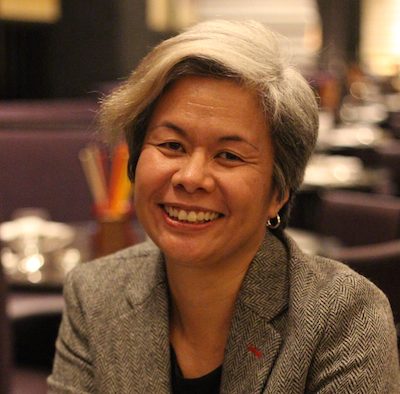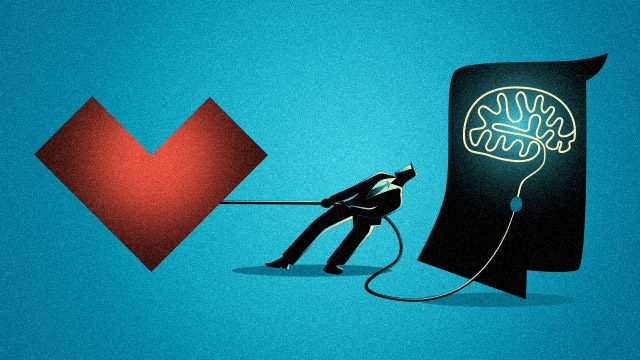SUMMARY
This is AI generated summarization, which may have errors. For context, always refer to the full article.

What drives people to change their behavior for the better? Insights from the field are yielding surprising answers.
Imagine a typical development project – whether it’s run by the government, an international agency, or an NGO. It’s probably grounded on a very elaborate program framework, with outcomes, outputs, activities, and metrics for each component. For complex issues like health, environment, education, or poverty, these programs almost always need to address multiple factors, like governance, policy, enforcement, access, etc.
Lately, we’ve been turning our attention to a central piece of the puzzle – human behavior. What do we really need to do in order to get mothers to give birth in hospitals instead of at home, local communities to stop cutting mangroves for charcoal, fishers to stop using dynamite, or parents to keep their children in school?
When I was still working in advertising, one of the first things we would ask during a brainstorming session was, “What’s the insight?” This meant pondering over such things as, what was the big realization that we had uncovered about the product, the users, or even the category, which would help us come up with a fresh approach to talk about our brand in a way that was relevant to the audience?
In today’s terminology, we would be saying, “Saan galing ang hugot?”
If you’re asking someone to buy a brand of shampoo, it wouldn’t be such a difficult decision: they know that if they don’t like the product, they can easily switch back to their old brand. But when it comes to development issues, hugot is even more important.
For someone who believes that illegal fishing is the only thing keeping his family alive, is there really anything you can do to convince him to stop? For a mother who has never set foot outside her village, the idea of a hilot who comes and helps her care for her children while she recovers her strength after childbirth is so much more comforting than going to a sterile medical facility filled with strangers.

Unfortunately, many development projects have not succeeded in moving beyond the “IEC” mindset. In the past, project designs incorporated a component for Information, Education and Communication. But as anyone who has eaten one cake slice too many will tell you, just because you know something is bad for you doesn’t mean you will stop doing it.
The good news is that we’re learning, and now, more development projects – led notably by the health sector – are stressing the need for behavior change communications. This has led to better designed programs that address the barriers that prevent people from doing the right thing. One example is the emphasis on mother- and child-friendly birthing facilities, where health workers are trained to be more empathetic to their patients.
Identifying that all-important hugot is at the heart of our mission at Rare, where part of our work involves training local conservation leaders how to develop community campaigns to get people to practice more sustainable fishing. We teach them how to get into the minds of the fishers they work with, and find the hugot that would lead to behavior change.
In one of our communities in Camarines Sur, we got to know Mang Berting Refugio, a self-confessed former dynamite fisher who now heads the local Bantay Dagat. Through many conversations with him, we realized that while sending his many children through school was the reason he practiced dynamite fishing, they were also the reason why he stopped. When the Bantay Dagat was formed in his area and he saw how they were seen as role models in their community, he decided he didn’t want his children to be ashamed of him, so he resolved to stop and signed up as an enforcer instead.
Such insights find their way into many of the campaigns developed by our conservation fellows – in Mang Berting’s case, being a positive role model in the community can actually outweigh purely financial gain.
Erez Yoeli, co-director of the Yale Applied Cooperation Team and research scientist at Harvard, who recently joined us on a behavior insights mission to Bicol, noted that strengthening these social norms is critical to long-term behavior change.
So for a program to work, and for change to really stick, it never hurts for people working in development to pause and look up from the program framework, do a deep dive in the communities they are working in, and dig deep to unearth the insights that drive behavior.
‘Pag may hugot, mas may chance ang forever. – Rappler.com
Rocky Sanchez Tirona is the vice president of Rare, an international conservation NGO, in the Philippines. Previously, she served as the creative director and managing director for Campaigns Social Response of the advertising firm Campaigns & Grey.
Add a comment
How does this make you feel?
![[ANALYSIS] A new advocacy in race to financial literacy](https://www.rappler.com/tachyon/2024/04/advocacy-race-financial-literacy-April-19-2024.jpg?resize=257%2C257&crop_strategy=attention)


![[In This Economy] Can the PH become an upper-middle income country within this lifetime?](https://www.rappler.com/tachyon/2024/04/tl-ph-upper-income-country-04052024.jpg?resize=257%2C257&crop=295px%2C0px%2C720px%2C720px)

There are no comments yet. Add your comment to start the conversation.